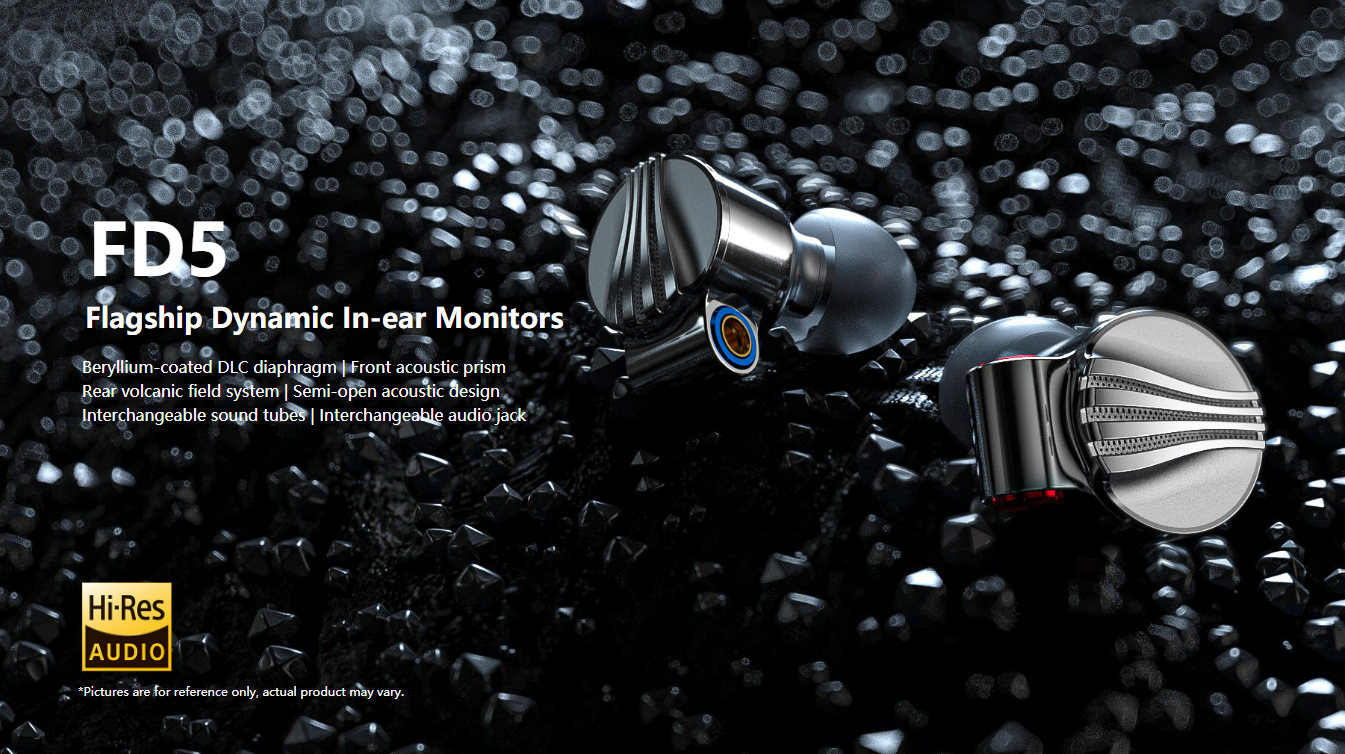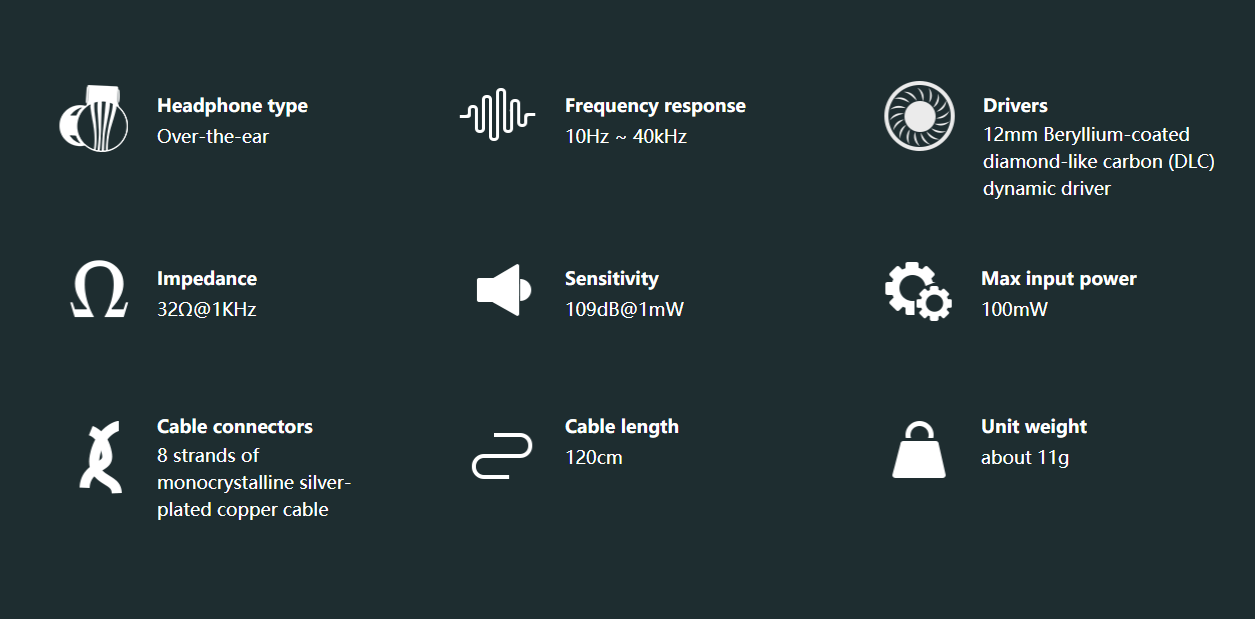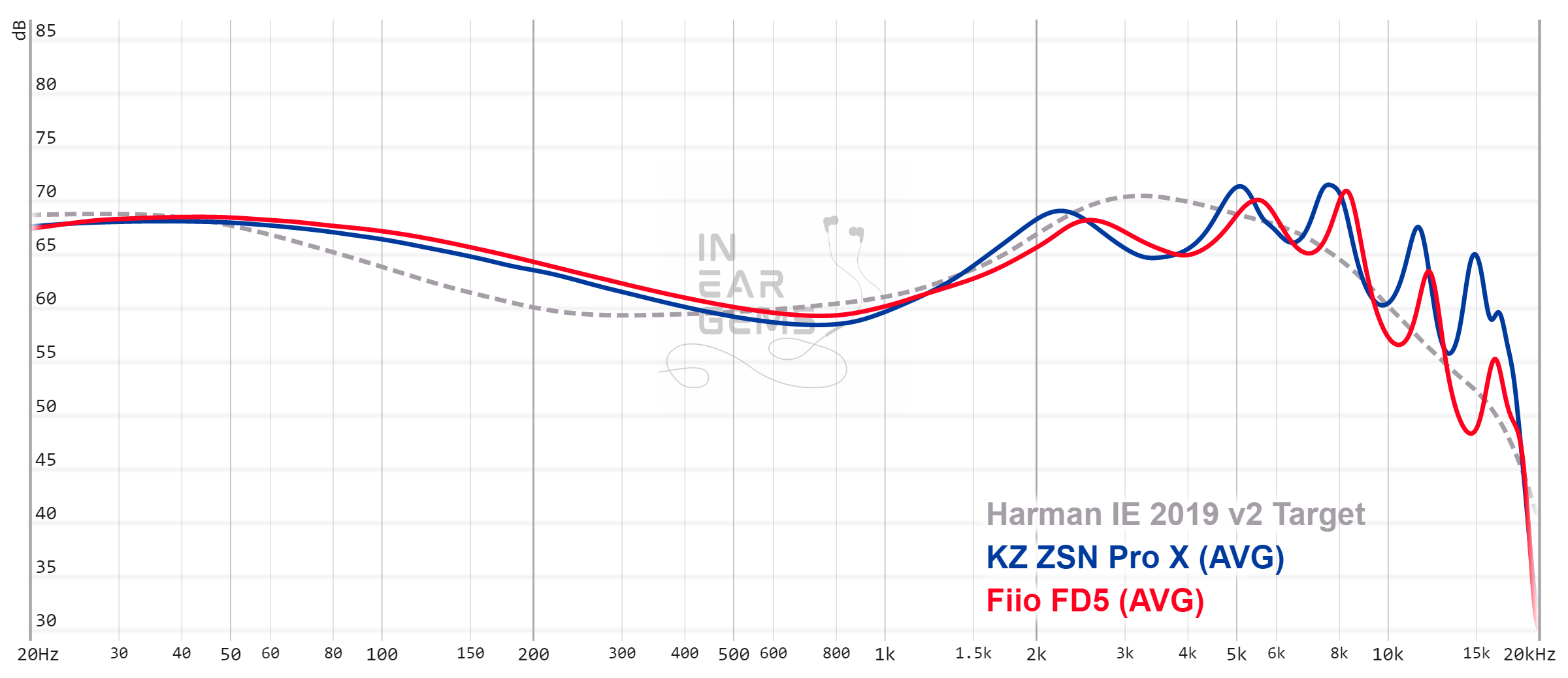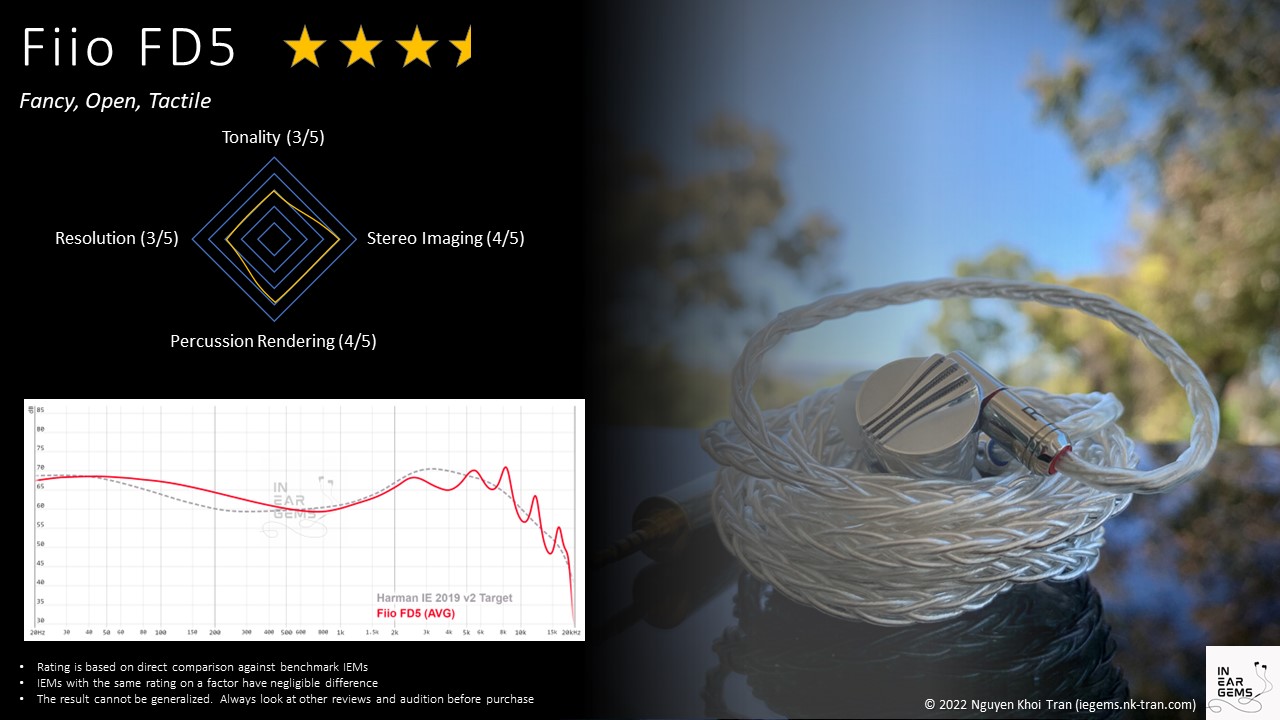FIIO FD5 - The New Flagship & Soundstage King
Disclaimer:
I have bought this IEM with my own hard earned money and no one has paid me anything or supplied me with any review unit. So, everything mentioned in this review are purely my own based on my experiences with the IEM.
Introduction:
The FiiO FD5 is a new flagship single 12mm beryllium-coated dynamic driver universal IEM featuring interchangeable sound tubes. It is priced at $299.99
Fiio has had a long adventurous journey into hybrid IEMs such as: FH3, FH5, FH7 and FA9 and had reasonable success specially with FH7.
Now it seems that they are back to basics with single Dynamic driver in their brand new flagship the FD5
.
Specifications:
Drivers: 12mm Beryllium-coated diamond-like carbon Dynamic Driver
Impedance: 32 Ω
Sensitivity: 109 dB/mW
Frequency Range: 10 – 40 kHz
Cable/Connector: 120cm MMCX
Price: $299
The Sound Tubes - Interchangeable
The FD5 comes with interchangeable output nozzles and FiiO includes 2 sets. The stock nozzle is approximately 4.5mm which is a common size. The second nozzle is thinner and looks like a 2.5mm size which is not a common size.
My impression moving forward on the sound signature is mainly with the narrow sound tube as that gives much better tonality with rich texture and better imaging & Timbre. Clarity also improved quite a bit with the narrow one... but details on those coming later.
The Package:
The package is great for the price can almost rival those of $1000 price ranges...
Lifting the first layer of foam, another floor is being revealed, home to the rest of the accessories. On the right there is a smaller box that houses a cleaning brush, a pair of interchangeable sound tubes, a yellow MMCX clip that will help you remove the cable much easier and two interchangeable headphone jacks: a 2.5mm balanced and a 4.4mm balanced one. FiiO did really kill three birds with one stone, as the included cable has 3 interchangeable audio jacks and that is probably the best idea they came up with.
On the left you’ll find a bigger ear tip collection split into 5 categories, as follows
- Balanced ear tips (3 pairs of S, M and L – the standard white silicone ones)
- Vocal ear tips (3 pairs of S, M and L – the white silicone ones with red inner tubes)
- Bass ear tips (3 pairs of S, M and L – the grey silicone ones with a red inner tube)
- Tri-Flange ear tips (2 pairs of S and L – the longest white silicone ones)
- Memory foam tips (2 pairs in M size only – the black foam sticky ones)
An impressive packaging no doubt, but even more impressive was seeing the number of accessories laying inside. FD5 is covering all my needs, including 4.4mm and 2.5mm balanced connections.
Design & Build Quality:
Looks are always subjective, but I think these are just great-looking IEMs. Maybe the best amongst FiiO IEMs till date. Its shell is made out of polished stainless steel, a bit heavier than many others but that gives some confidence on the product being high-quality. The FD5 comes with semi-open design & if you closely inspect the outer cover, you can spot some tiny holes in it. The IEM shell does also have a small hole in it, that will remove the air pressure between your ear canal and the IEM body, for a much better comfort long term.
Comfort:
Although a bit on the heavier side, I found them comfortable for longer hours of listening and never felt too heavy on the ears.
Story of the Narrow tube & Ear-tips:
Amongst the interchangeable tubes that the FD5 comes with, I found the Narrow tube to be more musical and significantly better in terms of sound.
Hence, the full sound impression is based on the narrow tube only. However, that comes with a problem... very few ear tips fit the narrow tube.
Hence, the story of ear tips begins... comparison of the few that actually fit the narrow tube are below....
The ear tips I had used are...
- Shure silicon tips
- Spinfit CP800
- Final Audio Transparent red
Amongst the above 3 tips, I found that the shure somehow turns down the bass quite a bit while enhancing mids & highs. In the Final E series one I found the mids to be a tad bit less prominent than the Spinfit CP800 one. Hence, I preferred the CP800 for the overall better sound.
NOW LET'S TALK ABOUT THE SOUND....
Items used for this review:
Tracks used for this review:
Dire Straits – Telegraph Road (Flac 16bit/44.1kHz)
INXS – Need you Tonight (Flac 16bit/44.1kHz)
Mark Knopfler – The ragpicker's dream (Flac 16bit/44.1kHz)
Eric Clapton – Tears in Heaven (Acoustic Live at MTV) (Flac 16bit/44.1kHz)
Lost Frequencies – Crazy (Flac 16bit/44.1kHz)
Don McLean - American Pie (24bit/192kHz)
The Chainsmokers – Something Just like this (24bit/48kHz)
Smith & Thell - Goliath (24bit/48kHz)
Owl City - Fireflies (Flac 16bit/44.1kHz)
Dolores o' Diordan – Ordinary Day (24bit/96kHz)
Coldplay - Hymn for the Weekend (24bit/96kHz)
The Doors – Spanish Caravan (24bit/96kHz)
REM - Losing my Religion (24bit/88.2kHz)
Mumford & Sons – There will be time (Flac 16bit/44.1kHz)
Ronan Keating – When you say Nothing At All (Flac 24bit/48kHz)
Source of Sound & DAC/AMP:
The Hiby R6 and IFI Hipdac had been used mostly.
Source of music has been QOBUZ for most cases.
Let's now talk about the quality of Sound....
Sound signature:
It's interesting to see that FiiO used the IE 2017 Harman Curve as a reference, tuning their FD5 as close to it as possible, here is a picture FiiO posted on their website. I found the tuning to be mildly V shaped... but more on the neutral side.
These initially sounded clean, undistorted and easy going. There was a feeling of smoothness and liquidity that cannot be found on hybrid or all-armature IEMs. After listening to multi-driver IEMs for a few months and then switching to FD5, the immediate feeling is that every sound is coming precisely at the same time, from the same spot in a natural and undistorted way. Bass felt quite airy and textured, the soundstage was impressively well-spread, with a perfect positioning of every notes around me. There was plenty of air around those notes, the sound (weirdly enough) wasn’t exactly inside my head, creating a nice 3D image around me.
The BASS:
Bass felt quite airy and textured, but also heavy weight and muscular. There is good extension and depth to the bass. Every instrument sounds natural and there is good depth in the bass also. There isn’t a super long trail in the bass, bass notes are not overlapping with midrange and the rest of the FR always felt precise, defined and clear sounding. To some degree I find them even more detailed compared to multi-driver IEMs. There is always a raw and unpolished feeling with some particular Chi-Fi IEMs, but there is nothing of that in here, not even a footprint. FD5 are smooth, quite gentle with the right music, very polished and controlled even at much higher levels.
The MIDS:
Midrange felt great specially for instruments like Guitar - the sound is just rich & full of texture. Piano went down and decayed naturally, violins had a longer vibration, and was great sounding. Human voices are happening exactly in this region and sometimes I wanted to boost their presence so I could be carried away by their singing.
The HIGHS:
It is pretty cool experiencing cymbals and bells in a very clear and defined way, there is more bite in there with some very occasional mild sharpness. The only bad thing I can say about its treble, is that its intensity was higher than usual. However, I can’t find excessive ringing with them, there is no distortion, there is no bloat or a lack of refinement, nothing of that in here. Treble is boosted in the most sensitive part of our hearing; some might like that and some might not. I like the treble personally and do not find it fatiguing in any way.
The SOUNDSTAGE:
Soundstage is amongst the strongest traits when it comes to the FD5. It is huge, with great depth and layering. When I moved to other regular IEMs, it wasn’t as grand and open, as if the windows towards music were half shut, or half opened if you are an optimist. I strongly believe that the soundstage of FD5 is one of its best traits
Imaging & Timbre:
The FD5 produces a good amount of the microdetails and nuances present in recordings. I think it is one of their best qualities. Layering is done well and it gives the user a decent amount of directional information and placement. Imaging and timbre further shines with the use of upgrade cables with silver litz copper cables.
Comparisons :
FIIO FH7 : The FH7 being the most successful amongst Fiio flagships is a hybrid IEM. It comes with 4BA+1DD architecture. The FD5 on the other hand comes with a single DD. Though technically these are not comparable - My comparison here is more of a flagship against another and both coming from Fiio.
I have owned the FH7 for a few months now and it had been amongst my favorite IEMs till the FD5 came in. While the Balanced Armatures of the FH& produces clean & detailed sound... it misses on some of the 3D part of the timbre that we can get from the DD sound of the FD5. The bass is more textured... the mids have more body in the FD5. Overall I'd prefer the FD5 over FH7 any day.
Conclusion :
I have found the FD5 to be very pleasant sounding specially with the narrow tube. Sound-wise it's quite a beast and can beat IEMs that costs twice the price within a heartbeat. It is by far the best flagship IEM released by Fiio till date.
































